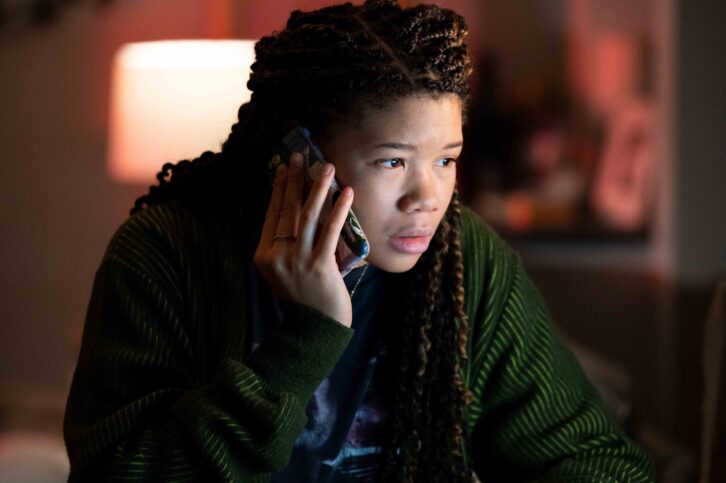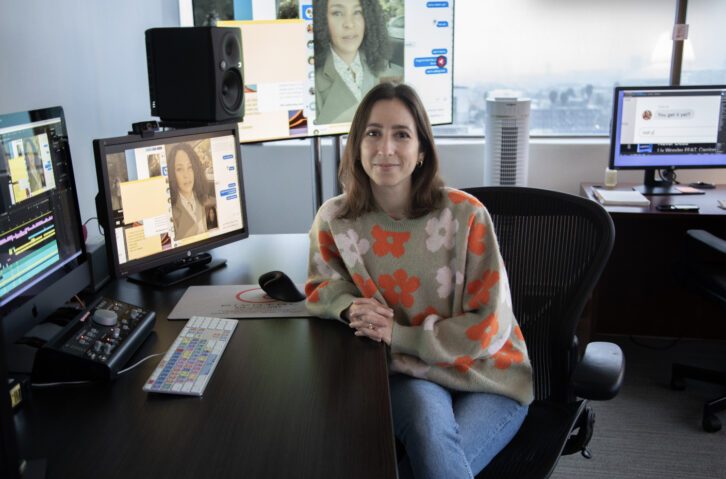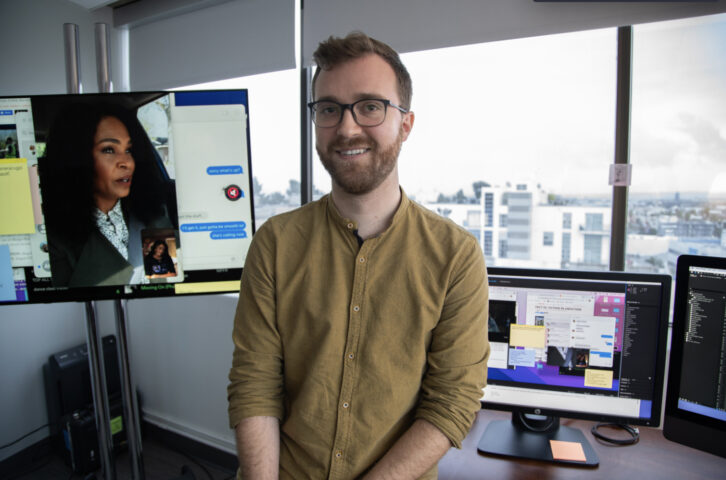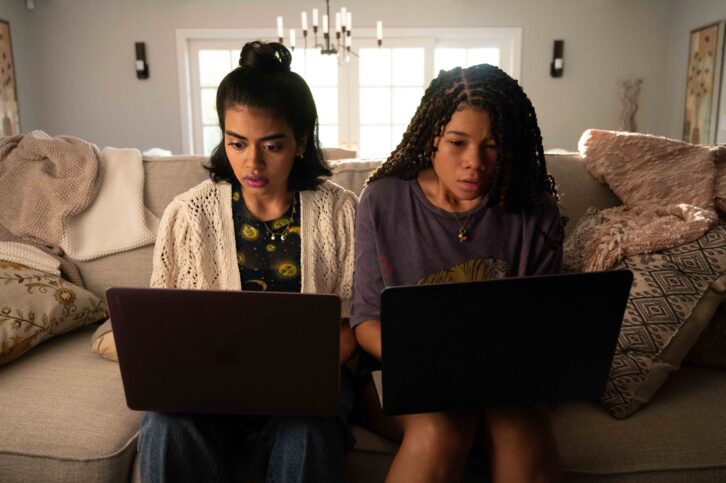Released in UK cinemas on 21st April, Missing tells the story of June (Storm Reid) whose mother disappears while on holiday with her new boyfriend.
June uses all the latest technology at her fingertips to try and find her Mum before it’s too late.
The film uses thousands of graphics to show the audience what June is seeing on screen, with a complex and VFX-heavy workflow custom-built to make viewers feel as if they’re logging in, clicking, and typing along with the characters in real-time.
TVBEurope spoke to Missing’s editors Austin Keeling and Arielle Zakowski to find out how they worked with Adobe Premiere Pro, After Effects, and Frame.io to edit, build shots, and design thousands of graphics simultaneously.

How did you get involved with Missing?
Austin Keeling (AK): Arielle and I both attended film school at the University of Southern California in Los Angeles, and knew the directors and producers through our time there. Neither of us had ever worked on this type of movie before, but we have both stayed busy since graduation: Arielle spent years editing in the commercial world, as well as a number of documentary series and films; and I have spent years freelance editing, as well as writing and directing for both film and immersive theatre. Our directors, Nick Johnson and Will Merrick, were looking for editors who would not only be willing to tackle the technical challenges of this film, but who could also bring diverse storytelling instincts to the process. Though Arielle and I had never worked together before this film, our differing backgrounds really complemented each other and led to a really exciting partnership on this project.
Did you work together, or separately, and share your work?
Arielle Zakowski (AZ): As editors on Missing we had a completely collaborative experience. We would each tackle a scene for a while, and we’d work on it until we got to a point where we were either running low on new ideas or, quite frankly, getting tired of working on the scene. Then at that point we would hand it over to the other for some fresh perspective. By the time we locked, every single scene had been touched by both of us.

What was your reaction when you found out the format of the film?
AK: We were honestly pretty nervous about how to approach such a technically complex film. We didn’t have much experience with programs like Adobe Illustrator or After Effects, so we had to teach ourselves very quickly. Aside from the technical aspects, this form of storytelling also presented numerous challenges. In a traditional film you are pretty much limited to the actual footage that has been shot. But in a screenlife movie like Missing, there are so many more possibilities. We were in charge of animating the mouse, production designing the layout of June’s desktop, and creating each shot in the film with a virtual camera. Beyond just dealing with a few takes of footage, we were juggling up to 40+ layers of graphics and animation in every scene. So we started this project with a lot of uncertainty, but we quickly found that the technical considerations became second nature, allowing us to focus on story and treat the edit much more like a traditional film than we had anticipated.
You used a custom-built workflow – what can you tell us about that?
AZ: Our workflow for this movie was developed by our fearless leaders Nick and Will, who not only wrote and directed Missing but also edited the first film in this series, Searching. The process begins with construction of a previz-animatic made in Adobe Premiere Pro, essentially a temp version of the entire movie made out of screenshots and the photos and voices of our team acting out the parts. This previz helped create the backbone of the movie and served as a guide for what the directors would shoot on set, how to determine the actors’ eyelines and general timing of each scene. Once principal photography wrapped, we replaced all our temp performance with those of our actors, and continued editing in Premiere as you would on a more traditional film (albeit, with 40+ layers of graphics to animate along with the footage in each scene). Once picture-locked, we sent our edit timelines over to Adobe After Effects and replaced all of our temp graphics with beautiful, crisp hi-res graphics built mostly in Adobe Illustrator. This is the phase where all the final details were dialed in, everything from the precise movement of the mouse to the names of folders on the desktop of our protagonist, June. The final movie was pretty much rendered right out of After Effects.

What technology did you use?
AK: Adobe Creative Cloud was truly our hero on this project – essentially every aspect of this film was created using Premiere Pro, Photoshop, Illustrator, and After Effects. We needed to be able to seamlessly move assets and cuts between programs, and Adobe’s simple and intuitive design allowed us to bring this film to life. In Premiere Pro, we used Productions to share projects quickly between ourselves and our amazing team of Assistant Editors. We also used Frame.io to share cuts with producers and the studio, get notes directly from the directors, and share assets and references with our graphics teams.
Did the film’s uniqueness make it easier or more difficult to edit compared to a more traditional kind of production?
AZ: Honestly, both! Unlike a traditional film where you are more-or-less locked into the lines and performances of the footage captured on set, with this film our (virtual) camera is only focused on the live-action footage for maybe 50-60 per cent of each scene. The other half is spent following our characters’ actions as they navigate various apps on screen, anything from searching through emails to sending texts to scrubbing through security camera footage. As a result of this, we were presented infinite opportunities to manipulate the story, whether through altering the lines our actors were saying off-screen or changing the content of what the characters were doing on their computers/phones. This was both a blessing and a curse – a blessing because we could continue interrogating the scene and finding ways to improve upon it, and a curse because the opportunities really were endless! There was also the added difficulty of having to animate and manipulate dozens of graphics any time we were working through a scene, which definitely added time to the process. Ultimately though, the uniqueness of this film gave us a massive amount of creative control throughout the edit and offered one of the most exciting and collaborative filmmaking experiences to date.

What do you think is the future for this kind of filmmaking?
AK: The future of this kind of filmmaking feels nearly limitless. So much has changed in the years between Searching and Missing, and our approach to telling a story through computer screens was greatly informed by the advances in technology since the first film. Who knows what new apps and programs will be part of our daily lives in another four or five years? As our interactions with technology expand and change, there will be countless new opportunities to tell this kind of story in fresh and exciting ways.
Would you work on this kind of film again?
AZ: Now that we’ve spent 2.5 years developing this very specific skill set, it does seem like it’d be a bit of a waste to not use it again! But I think we both could use a bit of a break from looking at screens 24/7 before diving back in…
Missing is in UK cinemas now.






